Abstract
Enterotoxin production correlated with biotype in a study of 686 strains of Aeromonas spp. from Indonesia, Thailand, the United States, and Western Australia. Most strains were isolated from feces but nonfecal human isolates and environmental strains were also included. More than 80% of Voges-Proskauer (VP)-positive strains, classified as A. hydrophila, were enterotoxigenic in the suckling mouse assay as were 90% of VP-positive, arabinose-negative strains. An association between positive VP, arabinose fermentation, and failure to produce enterotoxins was found only with environmental strains. VP-negative strains which did not oxidize gluconate or produce gas from glucose were classified as A. punctata subsp. caviae. Only 2 of the 286 strains produced enterotoxins, and both were from Indonesian fecal samples. There were few remaining VP-negative strains, classified as A. punctata subsp. punctata and, of these, about half were enterotoxigenic. Regardless of source and species, 97% of Aeromonas spp. were correctly classified in relation to enterotoxin production with a hemolysin assay. A combination of biochemical testing and hemolysin assay should be suitable for diagnostic laboratories to identify enterotoxigenic Aeromonas spp. which, in children, are associated with diarrhea, unlike non-enterotoxigenic strains.
Full text
PDF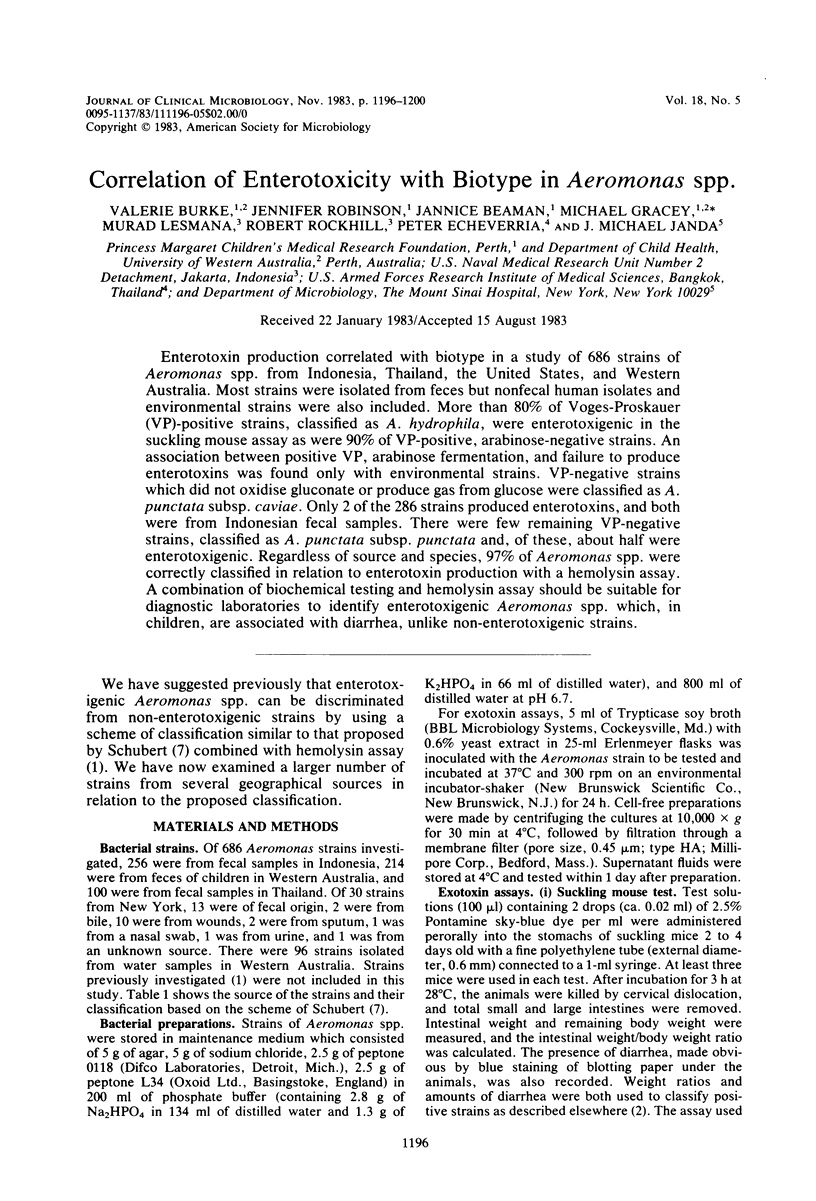
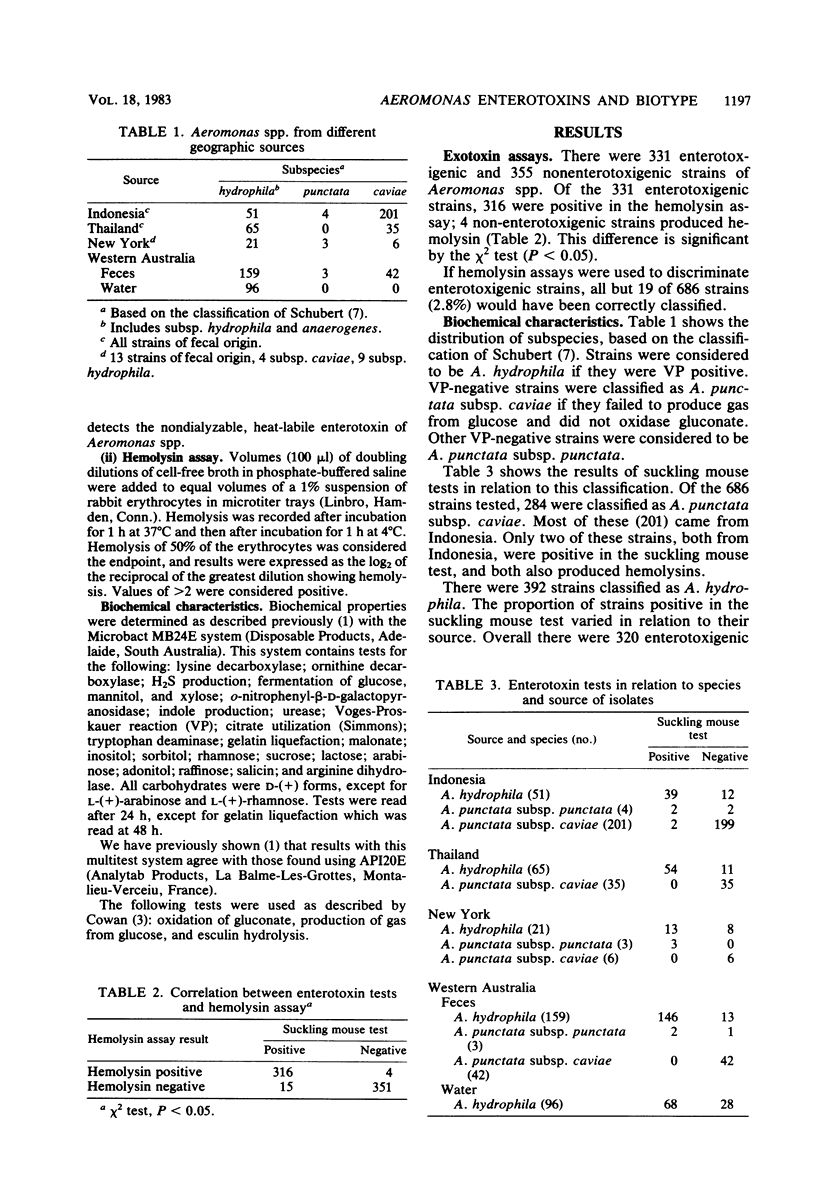
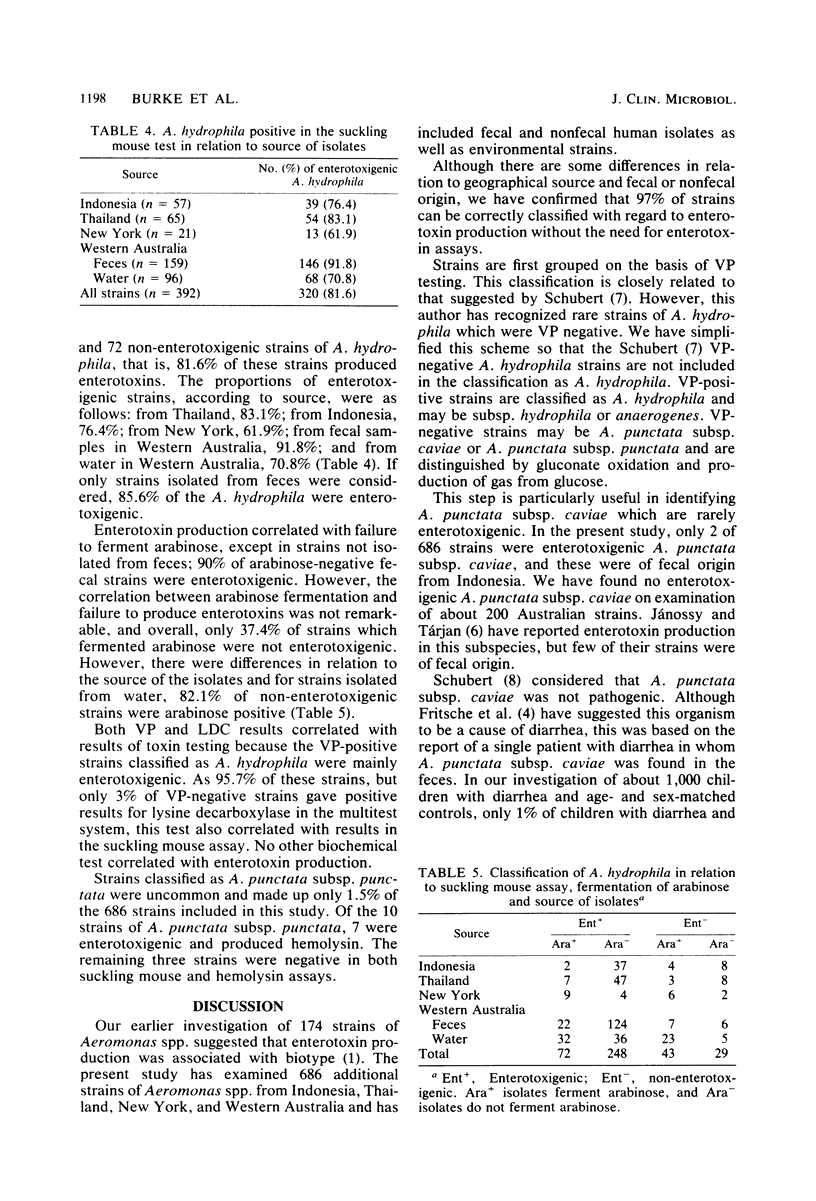
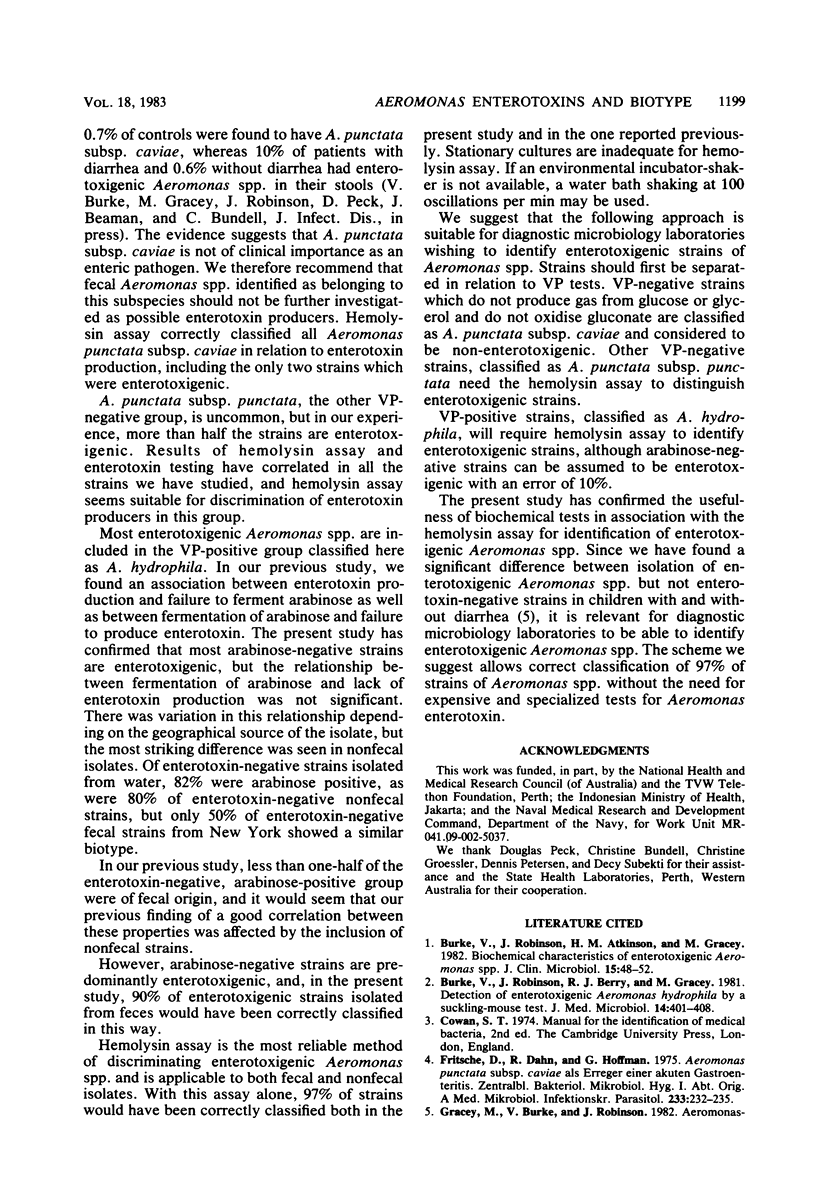
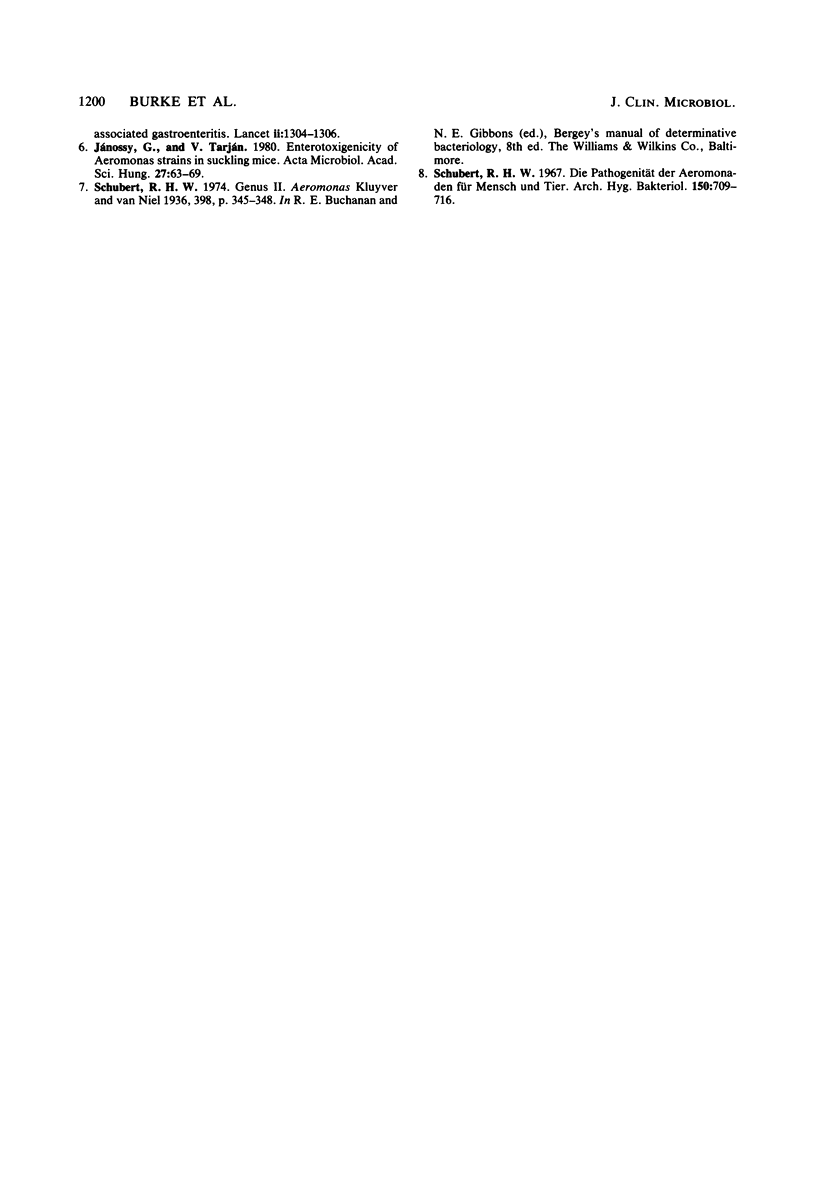
Selected References
These references are in PubMed. This may not be the complete list of references from this article.
- Burke V., Robinson J., Atkinson H. M., Gracey M. Biochemical characteristics of enterotoxigenic Aeromonas spp. J Clin Microbiol. 1982 Jan;15(1):48–52. doi: 10.1128/jcm.15.1.48-52.1982. [DOI] [PMC free article] [PubMed] [Google Scholar]
- Burke V., Robinson J., Berry R. J., Gracey M. Detection of enterotoxins of Aeromonas hydrophila by a suckling-mouse test. J Med Microbiol. 1981 Nov;14(4):401–408. doi: 10.1099/00222615-14-4-401. [DOI] [PubMed] [Google Scholar]
- Fritsche D., Dahn R., Hoffmann G. Aeromonas punctata subsp. caviae als Erreger einer akuten Gastroenteritis. Zentralbl Bakteriol Orig A. 1975 Oct;233(2):232–235. [PubMed] [Google Scholar]
- Jánossy G., Tarján V. Enterotoxigenicity of aeromonas strains in suckling mice. Acta Microbiol Acad Sci Hung. 1980;27(1):63–69. [PubMed] [Google Scholar]
- Schubert R. H. Die Pathogenität der Aeromonaden für Mensch und Tier. Arch Hyg Bakteriol. 1967 Mar;150(7):709–716. [PubMed] [Google Scholar]


